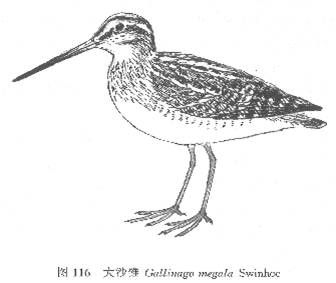| Citation |
|
Description |
Geographic Range [top]
Countries occurrence:
Native:
Australia; Brunei Darussalam; China; Guam; Hong Kong; India; Indonesia; Japan; Kazakhstan; Korea, Democratic Peoples Republic of; Korea, Republic of; Malaysia; Micronesia, Federated States of ; Mongolia; Myanmar; Northern Mariana Islands; Palau; Papua New Guinea; Philippines; Russian Federation; Singapore; Sri Lanka; Taiwan, Province of China; Thailand; Timor-Leste
Vagrant:
Israel; Maldives; Nepal
Additional data:
? Continuing decline in area of occupancy (AOO): Unknown
? Extreme fluctuations in area of occupancy (AOO): No ? Estimated extent of occurrence (EOO) - km2: 5270000
? Continuing decline in extent of occurrence (EOO): Unknown ? Extreme fluctuations in extent of occurrence (EOO): No
? Continuing decline in number of locations: Unknown
? Extreme fluctuations in the number of locations: No
Range Map: Click here to open the map viewer and explore range.
Population [top]
Population: The global population is estimated to number c.25,000-100,000 individuals (Wetlands International 2006), while national population estimates include: c.50-10,000 individuals on migration in China; c.50-1,000 individuals on migration and c.50-1,000 wintering individuals in Taiwan; < c.1,000 individuals on migration and < c.1,000 wintering individuals in Japan and c.100-10,000 breeding pairs and c.50-1,000 individuals on migration in Russia (Brazil 2009).
Trend Justification: The population trend is difficult to determine because of uncertainty over the impacts of habitat modification on population sizes.
Current Population Trend: Unknown
Additional data:
? Continuing decline of mature individuals: Unknown
? Extreme fluctuations: No ? Population severely fragmented: No
? Continuing decline in subpopulations: Unknown
? Extreme fluctuations in subpopulations: No ? All individuals in one subpopulation: No
Habitat and Ecology [top]
Habitat and Ecology: Behaviour This species is strongly migratory (del Hoyo et al. 1996). It breeds from May to August (Hayman et al. 1986) in scattered solitary pairs (del Hoyo et al. 1996), and forages singly (del Hoyo et al. 1996, Coates and Bishop 1997) or in dispersed flocks outside of the breeding season (Coates and Bishop 1997). The species is crepuscular and nocturnal in its foraging activities (del Hoyo et al. 1996). Habitat Breeding It breeds in open deciduous or mixed deciduous/evergreen woodland, showing a preference for grassy areas near marshes and streams (del Hoyo et al. 1996), clearings (Johnsgard 1981), clear-cut areas (del Hoyo et al. 1996), woodland along river valleys (Hayman et al. 1986) and open regions of forest with meadows, thickets and young stands of aspen Populus spp. or birch Betula spp. (Flint et al. 1984). It generally avoids very wet or boggy sites during this season (Johnsgard 1981) but may occur on alpine meadows near the treeline (del Hoyo et al. 1996). Non-breeding In its non-breeding range the species occurs in dense growths of grass and rushes around the edge of fresh and brackish (Higgins and Davies 1996) marshes (Higgins and Davies 1996, del Hoyo et al. 1996), swamps, pools, small streams, rice paddy-fields, sewage ponds (Higgins and Davies 1996, del Hoyo et al. 1996), rank grassland (Higgins and Davies 1996, Coates and Bishop 1997) and dry cultivated areas (e.g. with crops of rapeseed and wheat) (Higgins and Davies 1996). It may also be observed foraging among hummocks or on mudflats around seepage areas (del Hoyo et al. 1996). Diet Its diet consists of earthworms, adult and larval insects (e.g. glow-worms, beetles, ants and grasshoppers) (del Hoyo et al. 1996), terrestrial molluscs (Johnsgard 1981) and seeds (del Hoyo et al. 1996). Breeding site The nest is a simple scrape (del Hoyo et al. 1996) placed on dry substrates (Johnsgard 1981) with short grass (Flint et al. 1984) on slight elevations (del Hoyo et al. 1996) or mounds (Flint et al. 1984) in swamps and bogs (Johnsgard 1981), amongst bushes, or in the open in forest meadows (Flint et al. 1984, del Hoyo et al. 1996).
Systems: Terrestrial; Freshwater
Continuing decline in area, extent and/or quality of habitat: Unknown
Generation Length (years): 4.8
Movement patterns: Full Migrant
Congregatory: Congregatory (and dispersive)
Citation: BirdLife International. 2016. Gallinago megala. The IUCN Red List of Threatened Species 2016: e.T22693090A93383287. http://dx.doi.org/10.2305/IUCN.UK.2016-3.RLTS.T22693090A93383287.en. Downloaded on 24 April 2017.
Disclaimer: To make use of this information, please check the .
Feedback: If you see any errors or have any questions or suggestions on what is shown on this page, please provide us with feedback so that we can correct or extend the information provided |

